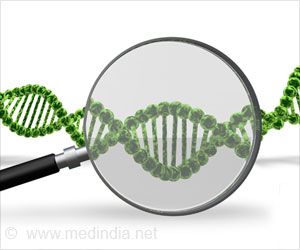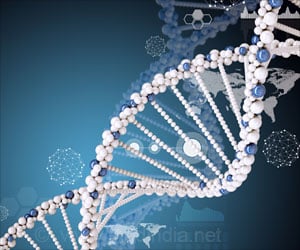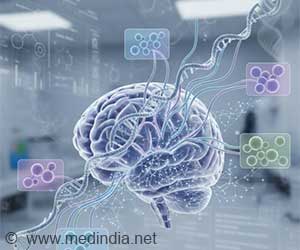Possible mechanism by which APOE4 gene variant increases risk of late onset Alzheimer’s disease (AD) identified in recent study.
- Scientists identify the possible mechanism by which the APOE4 gene variant increases risk of developing Alzheimer’s disease (AD).
- Brain cells of AD patients with APOE4 variant found to contain increased amounts of amyloid protein.
- Alzheimer’s disease is a neurodegenerative condition with no cause found and no cure available currently.
TOP INSIGHT
APOE4 gene variant shown to increase accumulation of beta amyloid protein that is responsible for the characteristic plaques found in the brains of Alzheimer’s patients.
Aim of Study
Although earlier studies have shown that persons with the APOE4 gene have higher levels of amyloid proteins, the reason for this was not known.The study team hoped to answer this question through human induced pluripotent stem cells i.e. stem cells derived from skin or other cell types and gain more insight into the role of the APOE4 gene variant in Alzheimer’s disease.
"APOE4 is by far the most significant risk gene for late-onset, sporadic Alzheimer's disease," Tsai says. "However, despite that, there really has not been a whole lot of research done on it. We still don't have a very good idea of why APOE4 increases the disease risk."
Details of Study – Effects of Converting APOE3 Gene Variant to the APOE4 In Brain Cells
- The induced pluripotent stem cells were stimulated to differentiate into three different types of brain cells namely neurons, astrocytes, and microglia.
- Using the CRISPR/Cas9 gene editing tool, the scientists genetically converted APOE3 in stem cells obtained from healthy subject to APOE4 variant. As the stem cells were genetically identical except for the APOE gene, any differences observed between them could be attributed to the APOE4 gene.
- Following this conversion, the study team noticed several changes in the gene expression patterns in neurons, astrocytes and microglia as follows:
- Neurons (nerve cells) expressing APOE3 and APOE4 differed in the expression of hundreds of genes (about 250 genes decreased and 190 increased in cells with APOE4).
- In astrocytes, the changes were even greater.
- They were mostly in microglia (in APOE4 microglia, more than 1,100 genes demonstrated reduced activity, while 300 were more active).
- The molecular alterations also manifested as changes at the cellular level in neurons, astrocytes and microglia as described below:
- Neurons with APOE4 formed more connections with other nerve cells, and secreted higher levels of amyloid protein.
- In APOE4 astrocytes, the scientists found highly dysregulated cholesterol metabolism. The cells produced double the amounts of cholesterol compared to APOE3 astrocytes, and marked inability to clear amyloid proteins from their surroundings.
- Microglia also showed similar changes as astrocytes. Their normal function of removing foreign matter, such as amyloid proteins and pathogens such as bacteria, were found to be much slower compared to when they had the APOE3 gene.
- The team also found that most of these effects could be reversed by using CRISPR/Cas9 tool to convert the APOE4 gene in brain cells derived from induced stem cells of patients with late-onset Alzheimer's disease to APOE3 variant.
Thus, the findings of the study suggest that efficient clearing of amyloid proteins is impaired in cells having APOE4 gene variant leading to its accumulation and resultant brain damage.
Experiments with Three Dimensional Organoids (Miniature brains)
- In another interesting experiment, the team created three-dimensional "organoids," or miniature brains, using cells containing genes associated with early-onset Alzheimer's. These miniature brains also had high levels of amyloid protein
- When the organoids were exposed to APOE3 microglia, most of the amyloid aggregates were cleared away. However APOE4 containing microglia did not remove the accumulations efficiently
Also, if gene-editing technology could be made to work in humans, which many biotechnology companies hoping to do, it could provide a potential way to treat Alzheimer’s disease patients with the APOE4 gene.
APOE Gene Expression In the General Population Vs Late Onset Alzheimer’s Disease
APOE, also called apolipoprotein E, comes in three variants, namely APO 2, 3, and 4. Normally, APOE binds to cholesterol and lipids in cells, enabling the cells to absorb the lipids. In the brain, cells known as astrocytes produce lipids, which are then secreted and taken up by neurons with the help of APOE for their activity.Among the general population, about 8 percent of people have APOE2 variant, 78 percent have APOE3, and 14 percent have APOE4. In contrast, in persons with late onset, non-familial Alzheimer's, (which accounts for 95 percent of all cases), this APOE profile is very different. Only 4 percent have APOE2, and APOE3 occurs only in 60 percent. Interestingly, APOE4 shows a marked rise with 37 percent of patients with late onset AD carrying this variant
References:
- Neuroscientists discover roles of gene linked to Alzheimer's (http://news.mit.edu/2018/neuroscientists-discover-roles-gene-linked-alzheimers-0531)
Source-Medindia
 MEDINDIA
MEDINDIA




 Email
Email








